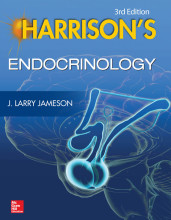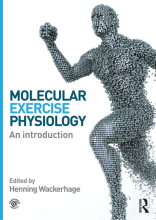Summary: Physical Activity And Beta-Amyloid Pathology In Alzheimer's Disease: ...
- This + 400k other summaries
- A unique study and practice tool
- Never study anything twice again
- Get the grades you hope for
- 100% sure, 100% understanding
Read the summary and the most important questions on PHYSICAL ACTIVITY AND BETA-AMYLOID PATHOLOGY IN ALZHEIMER'S DISEASE: A SOUND MIND IN A SOUND BODY
-
1 Introduction
This is a preview. There are 3 more flashcards available for chapter 1
Show more cards here -
Describe the amyloid cascade.
- amyloid beta is being misfolded and cannot be sufficiently corrected.
- amyloid beta is secreted from the cell and forms fibril in the extracellular matrix.
- The fibril aggregate into plaque clusters, prompting an inflammatory response from neurons, glia and endothelial cells.
- Aggregation continues
- amyloid beta is being misfolded and cannot be sufficiently corrected.
-
Which regulatory factors in amyloid production are named?
- Amyloid precursor protein (APP)
- BACE-1 (cleaves APP)
- presenilin 1/2 (PS)
- apolipoprotein E (APO-E)
- nephrilysin (NEP)
- insulin-degrading enzyme (IDE)
-
What is thougt to be the most effective way in reducing Alzheimer's prevalence?
Reducing its incidence... so prevention -
What makes exercise therapy relevant in Alzheimer's Disease?
Exercise is thought to work best in preventing and/or delaying the onset of Alzheimer's Disease. As there are yet no effective drugs to treat Alzheimer's Disease, prevention is the best treatment. Exercise has upside that it co-treats/prevents comorbidities often associated with the development of Alzheimer's (e.g. Cardiovascular Disease, Diabetes Mellitus type 2) -
What may be the effect of exercise on Alzheimer's symptoms?
attenuation of of cognitive impairment
improved glial homeostasis
improved learning
improved neurothrophic factors -
2 Beta-Amyloid
This is a preview. There are 1 more flashcards available for chapter 2
Show more cards here -
What is the main hypothesis about the relevance of beta amyloid thesis in Alzheimer's Disease?
Amyloid beta is, just as phosphorylated tau, a misfolded protein that aggregates inside or outside the cell and decreases the functionality of cells. This makes amyloid beta a good target in decreasing cognitive decline. -
What is said about the effect of Exercise on amyloid beta pathology?
It may reduce amyloid beta soluble levels, aggregation and plaque formation. But studies are heterogenous in studied species, exercise duration and protocol and exercise intensity. -
How is amyloid beta detected in humans?
It is evident in the cerebrospinal fluid. -
What seems to be an important underlying mechanism for the reduction of extracellular amyloid beta?
A reduction in the processing of Amyloid Precursor Protein (APP) -
Name some effects of exercise on the brain of AD mice
- reduces amyloid burden, presumably by lowering the APP metabolism
- increases hippocampal neurogenesis
- reduces astrogliosis and attenuates microglia activation
- Higher grades + faster learning
- Never study anything twice
- 100% sure, 100% understanding

































